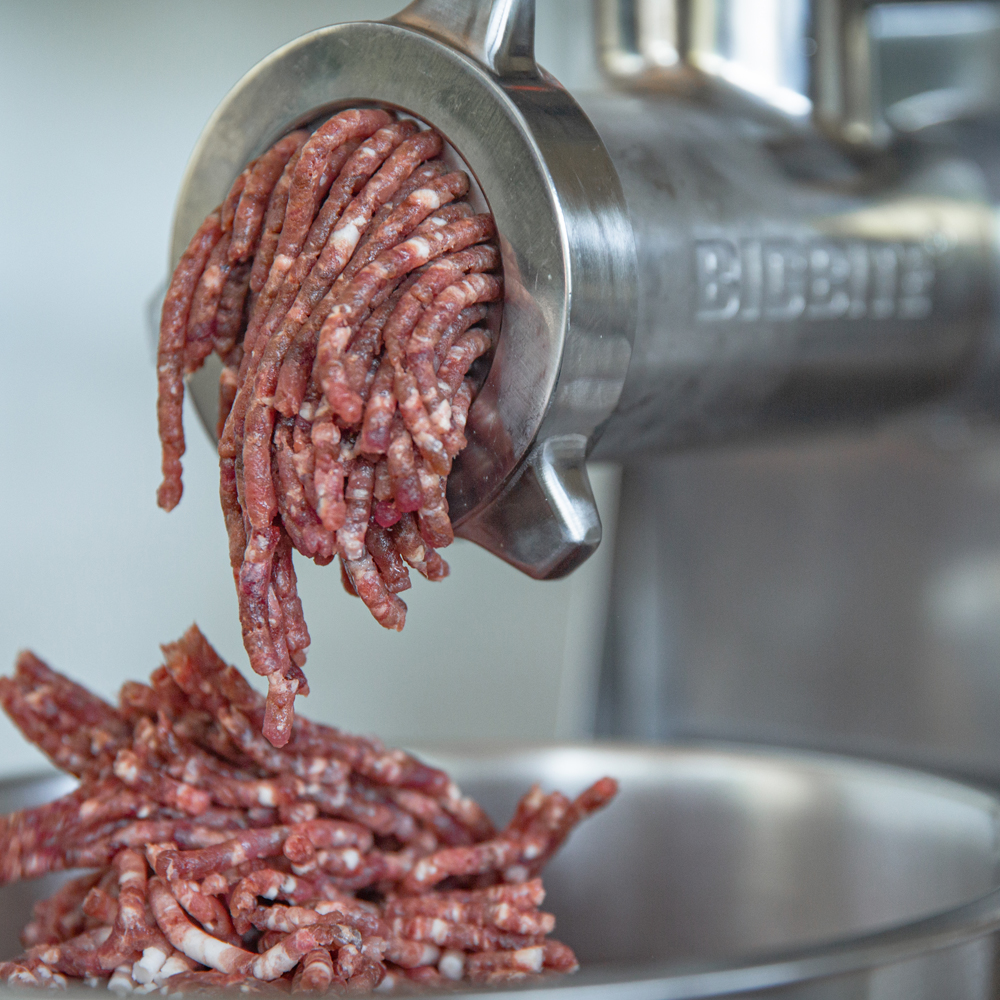

There’s a reason the best burger joints grind fresh. The final product is both tastier and juicier. For hunters, obviously there are advantages to grinding game then freezing, but, when possible, it is a great idea to keep either a roast or chunks of trim whole to grind burger to order.
But the fact is: When meat is frozen, ice crystals form in muscle fibers, causing very small tears in protein. Upon thawing out, moisture loss occurs. This is a big reason we never want to freeze meat twice, as there would be a second phase of moisture loss. We also lose a bit of moisture while grinding, but to a lesser degree. However, when freezing ground meat, ice crystals in shorter muscle fibers can potentially result in even more moisture loss versus freezing as a whole muscle.
Below are general tips for prepping and cooking an incredible venison burger.
GENERAL PREP TIPS
· Try to trim away all silver skin and fascia. Pockets of that in grind can produce unsavory flavor notes.
· Keep the meat cold when grinding. Consider freezing the grinder chute, too, so meat doesn’t smear when grinding.
· Venison is incredible on its own. Don’t cut with other meat. While venison is lean, you can still grill—without the burger falling apart—on a skillet or over an open fire if the grate is both clean and hot.
· Use a fine grinding die once or grinding coarse then fine. Using only a coarse die with produce some chunky bites.
· Get quality ingredients—a venison burger is a rare treat most people don’t get to enjoy, so don’t get just any bun or any cheap package of cheese.
· A bigger patty (at least 6 ounces, but maybe as much as 8 ounces) lowers the risk of overcooking your venison. A venison burger is best served medium-rare, so if you can handle a big-mouth burger, make those patties half-a-pound.
Also feel welcome to get creative as you get more confident with grilling an incredible venison burger. For example, maybe next time you add some pecan or cherry wood chunks to the fire when grilling; or you pick up a fancy cheese, maybe grill some pear slices and include on your burger versus the traditional tomatoes, onions, lettuce, and pickles.
To form burger patties, you can use either LEM burger presses or form by hand. To form by hand, start with a ball, and press down into parchment square with your support hand. Use your dominant hand to form the outer edge. With your support hand, press down and outward while your dominant hand turns the patty and almost lightly karate chops in a crescent-moon form. You don’t want cracks along the edges, as those can cause the burger to split while cooking.
GENNERAL BURGER-COOKING GUIDELINES
1. Form patties and lightly salt and pepper both sides and allow to rest in the fridge 2-3 hours prior to cook.
2. To cook, heat grill or skillet to 500-600 F. Lightly oil both sides of burger before putting on the grill. (I sometimes you use canola oil in spay can.) This helps avoid sticking but the oil, when exposed to high heat or fire, also helps form a hearty crust on the meat.
3. To grill, go straight from the fridge to the grill. Cook 6-ounces burgers for 2 minutes each side; 8-ounce burgers for 2-1/2 minutes each side. Allow to rest for 5 minutes prior to serving.
4. Pro tip with putting burger on the bun: Mayonnaise on the bottom acts as a barrier and helps prevent juices from penetrating the bottom bun and causing it to deteriorate.
Any questions or comments, please reach out on Instagram: @WildGameJack